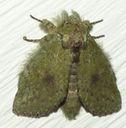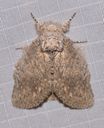Cecrita
Cecrita
Classification
- Phylum: Arthropoda
- Subphylum: Hexapoda
- Class: Insecta
- Order: Lepidoptera
- Superfamily: Noctuoidea
- Family: Notodontidae
- Subfamily: Heterocampinae
- Genus: Cecrita
Pronunciation
How to pronounce Cecrita: /sɛkˈɹiːtə/
These audio files are automatically generated. While they are not always 100% accurate, they are a good starting point.
Images


Summary
Cecrita is a genus of prominent moths in the family Notodontidae, comprising about eight described species located in North, Central, and South America, recognized for their distinctive appearance and ecological roles as herbivores and pollinators.
Physical Characteristics
Cecrita moths are known for their prominent appearance, with many species displaying distinct coloration and patterns.
Identification Tips
Species can be identified by their unique wing patterns and colors, such as the wavy-lined pattern of Cecrita biundata and the saddled appearance of Cecrita guttivitta.
Habitat
Cecrita species inhabit a range of environments across North, Central, and South America, typically found in wooded or shrub areas where host plants are available.
Distribution
Found in North America, with some species extending into Central and South America, particularly in regions with suitable habitats.
Diet
The larvae of Cecrita moths are generally known to feed on various host plants, often including trees and shrubs native to their habitats.
Life Cycle
The life cycle of Cecrita moths includes the typical stages of egg, larva (caterpillar), pupa, and adult moth. The duration of each stage can vary by species and environmental conditions.
Ecosystem Role
As larvae, Cecrita species act as herbivores, contributing to the plant community dynamics, while adult moths serve as pollinators and prey for various nocturnal predators.
Collecting Methods
- Light trapping
- Netting during moth activity hours
Preservation Methods
- Pinning
- Drying specimens in a controlled environment
Evolution
Cecrita was distinguished from the genus Heterocampa and has about eight described species, showcasing evolutionary diversity within the Notodontidae family.
Similar Taxa
Misconceptions
Some may confuse Cecrita moths with other similar looking moths due to their prominent features and colors.
Tags
- moths
- Cecrita
- Notodontidae
- Lepidoptera
- North America